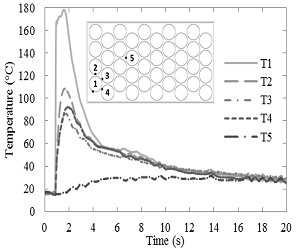
Said Al-Hallaj
University of Illinois, Chicago, USA
Title: Preventing thermal runaway propagation in li-ion batteries
Biography
Biography: Said Al-Hallaj
Abstract
Lithium-ion battery technology has gained signifi cant interest over the past two decades due to its high-energy density, high power and long cycle life. However, recent frequent safety incidents with Li-ion battery fi res (i.e., personal electronics, hover boards, electric vehicles, aircraft s etc.) highlight the safety concerns and may hinder wider use of this promising energy storage technology. To guard against such accidents, a robust thermal management system is necessary to protect the battery pack under all circumstances, especially when the monitoring or active cooling system fails to detect a cell failure. Th ese Li-ion fi res were caused by thermal runaway, a chemical phenomenon during which the anode, cathode and electrolyte irreversibly react, generating large amounts of heat that escalate the cell temperature and internal pressure, oft en with combustion of gases. Several scenarios and factors can trigger thermal runaway. Overheating of the cell can lead directly to thermal runaway by triggering a series of exothermic chemical reactions. Due to these potential hazards, numerous safety mechanisms are oft en built into Li-ion cells. The failure of a single cell can generate suffi cient heat to trigger the surrounding cells into thermal runaway, leading to propagation, the largest danger of thermal runaway. While the energy release of a single cell event can reasonably be contained, if the liberated heat raises the temperatures of neighboring cells in a pack, it becomes likely that a cascade of propagating cells will result in fi re and complete pack destruction. Thus, it is necessary to design pack-level safety features in addition to the cell components. In designing for safety of Li-ion packs, it is helpful to examine the various modes of propagation from one thermal runaway event to other cells. Single cells are known to reach 700°C in open air during thermal runaway, giving rise to signifi cant heat transfer via conduction (either through cell in direct contact or through external current collectors), convection and radiation. One promising approach to pack thermal management is the use of phase change composite materials (PCC), which off ers passive protection at low weight and cost while minimizing system complexity.

We present experimental nail penetration studies on a Li-ion pack for small electric vehicles, designed with and without PCC, to investigate the eff ectiveness of PCC thermal management for preventing propagation when a single cell enters thermal runaway. The results show that when parallel cells short-circuit through the cell triggered by nail penetration, the packs without PCC propagate fully while those equipped with PCC show no propagation.

